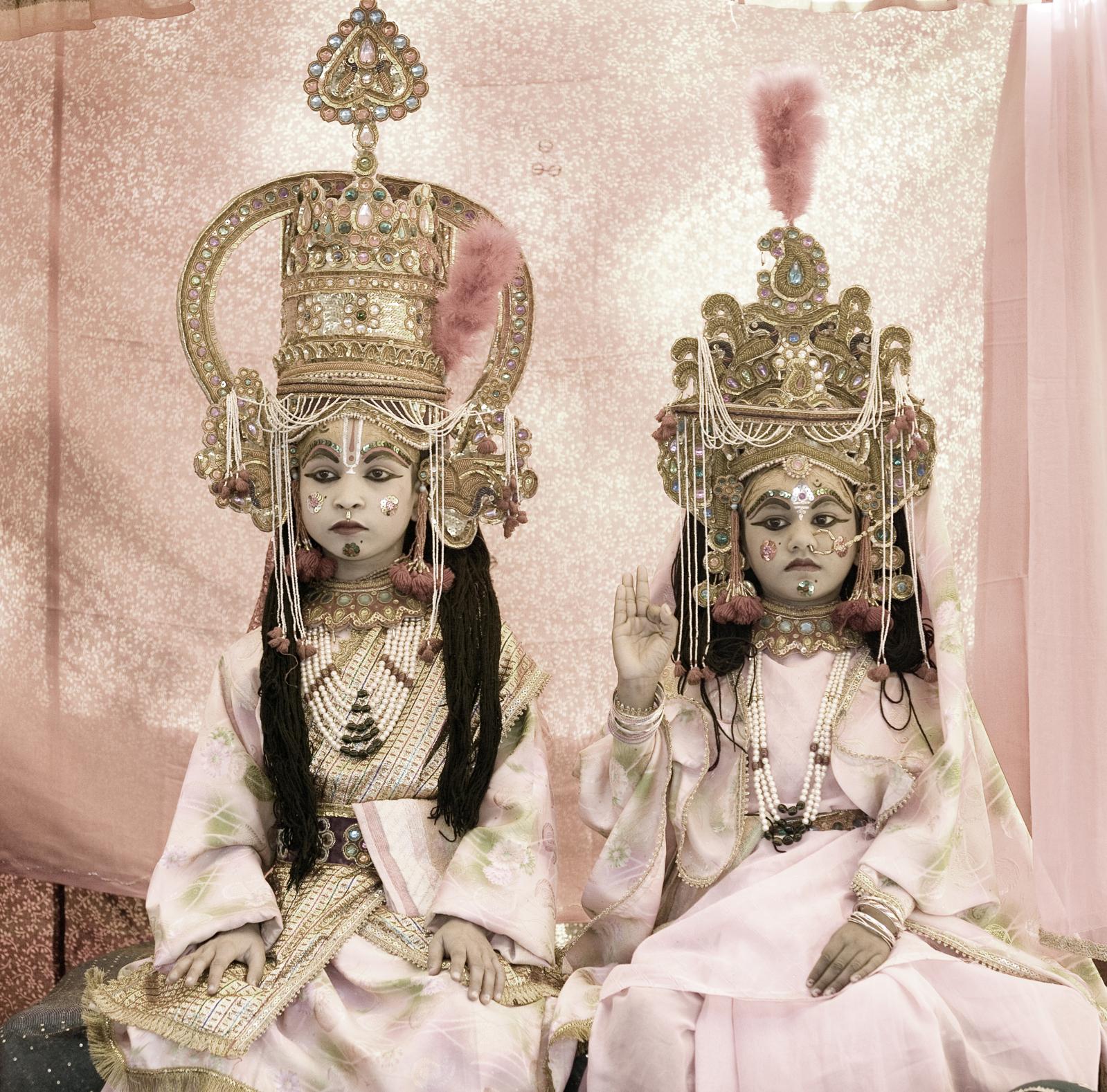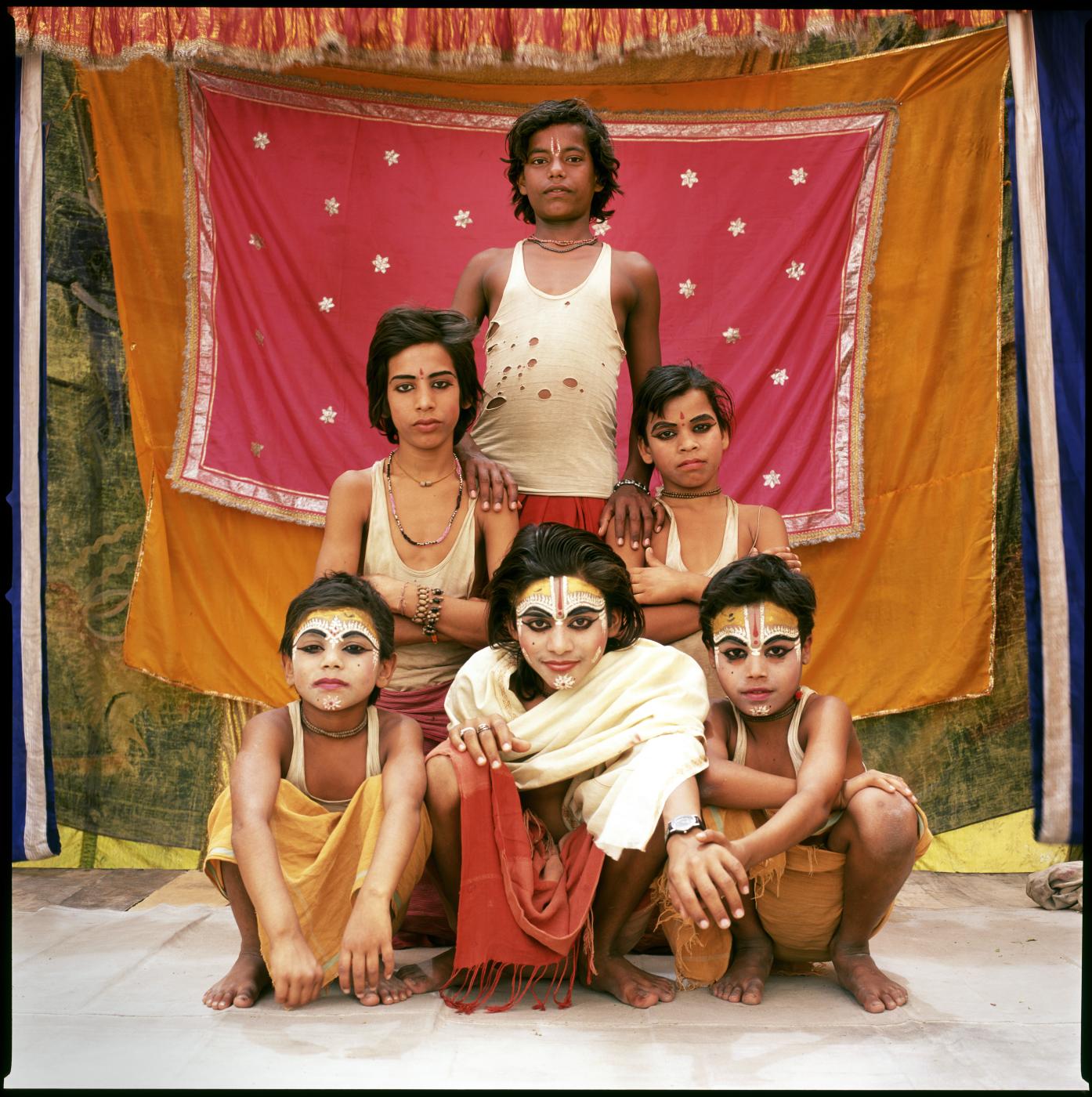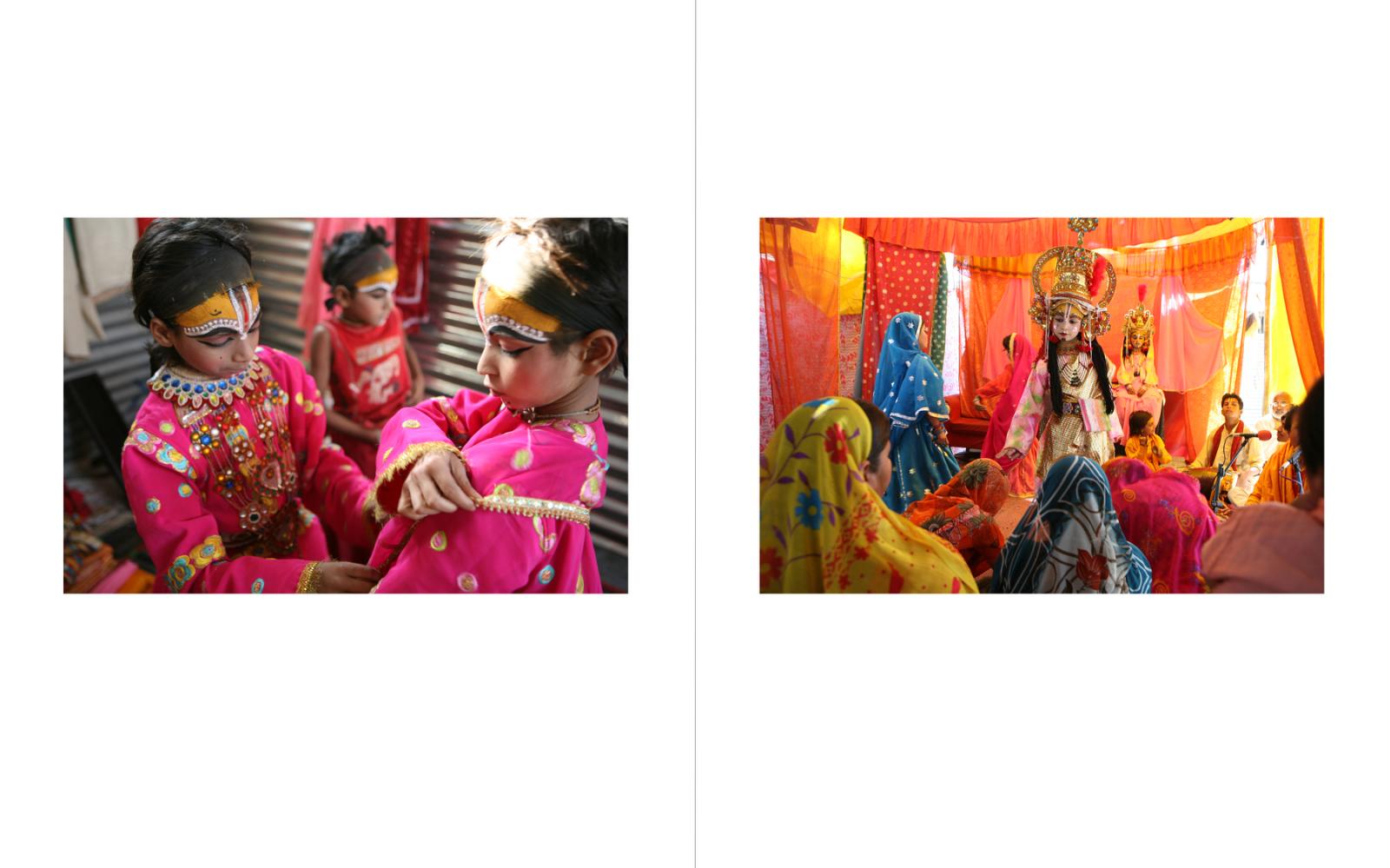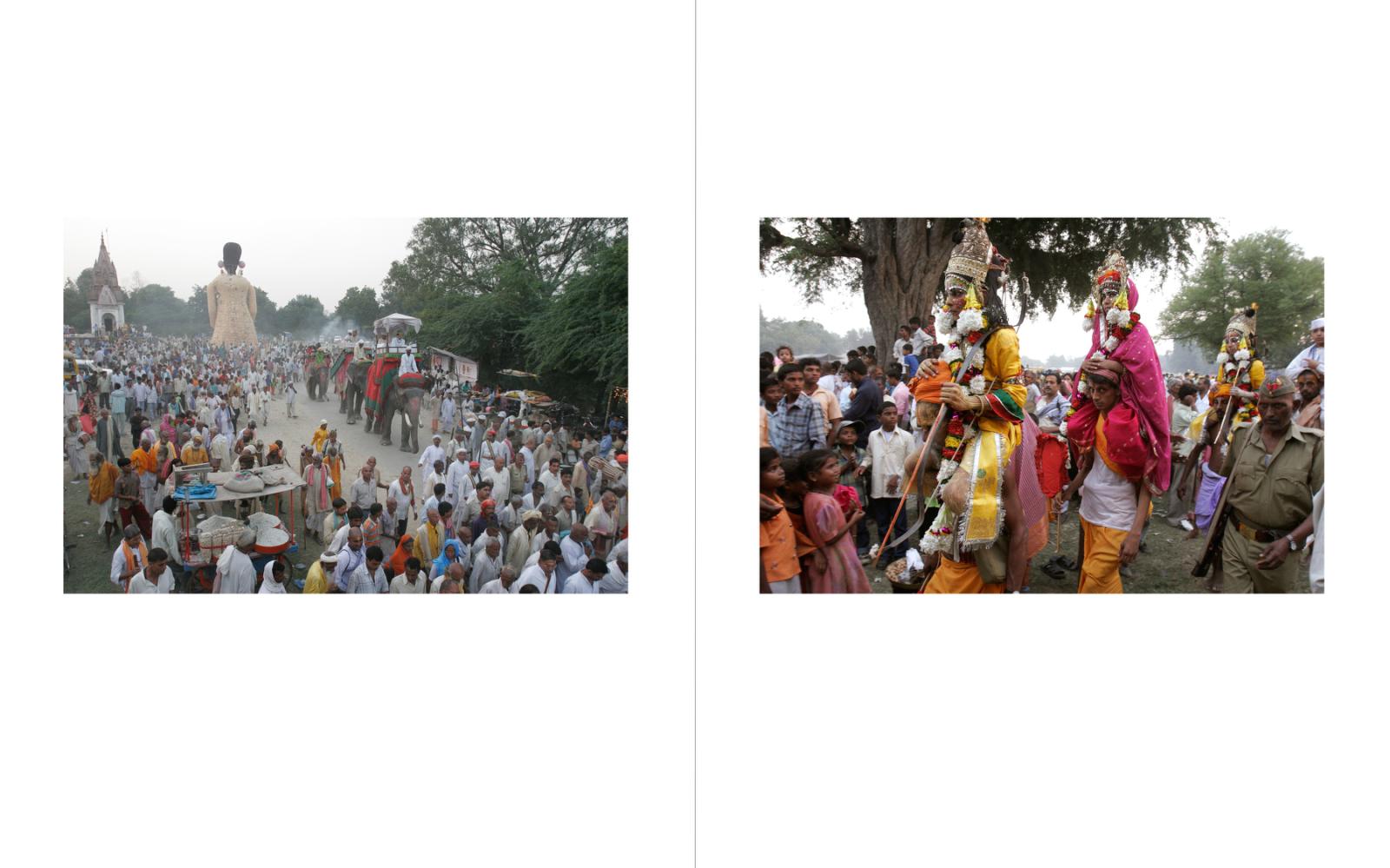Public Story
The Fantastic World of Ramlila
Summary
Ramlila, literally “Rama’s Play”, is India‘s most famous religious theater. It is a performance of the Ramayana epic with a series of scenes that include song, narration, recital, dialogue and dance. It is performed across northern India during the festival of Dussehra, held each year according to the ritual calendar in Autumn. It can also be seen during religious happenings and pilgrimages such as the Kumbh Mela. But more than a performance, it is an art form, a community gathering and for many, a form of pilgrimage to purify the soul.
The main characters are played by young brahmin boys -the swarupts- and when they perform as Gods, they are deferred to by the public as though they are literally divine in their God- incarnations. Their feet – the God’s feet- never touch the ground, they are carried around by priests and disciples.
This staging of the Ramayana is based on the Ramacharitmanas, one of the most popular storytelling forms in the north of the country. This sacred text devoted to the glory of Rama, the hero of the Ramayana, was composed by Tulsidas in the sixteenth century in a form of Hindi in order to make the Sanskrit epic available to all. The majority of the Ramlilas recount episodes from the Ramacharitmanas through a series of performances lasting ten to twelve days, but some, such as Ramnagar’s, may last an entire month. Festivals are organized in hundreds of settlements, towns and villages during the Dussehra festival season celebrating Rama’s return from exile. Ramlila recalls the battle between Rama and Ravana and consists of a series of dialogues between gods, sages and the faithful. Ramlila’s dramatic force stems from the succession of icons representing the climax of each scene. The audience is invited to sing and take part in the narration. The Ramlila brings the whole population together, without distinction of caste, religion or age. All the villagers participate spontaneously, playing roles or taking part in a variety of related activities, such as mask- and costume making, and preparing make-up, effigies and lights. However, the development of mass media, particularly television soap operas, is leading to a reduction in the audience of the Ramlila plays, which are therefore losing their principal role of bringing people and communities together.
The world-famous Ramlila of Ramnagar is a medieval mega production that is the most traditional and authentic rendering of the play, told over 31 days in a town transformed into a giant stage hosting the Gods of high heaven and Demons of the underworld among human and animal dwellers of middle earth. There is no electricity during Ramlila in Ramnagar – stages are lit-up with torches and the actors have to yell their parts – because that’s way it was done 200 years ago.
It is a display of the Maharaja of Benares’s splendor and each day the play starts only after his arrival on his elephant: he is the patron of the Ramnagar Ramlila like his ancesters over 200 years ago.
The crowd who attend the Ramlila join Ram in his journeys through the mythological neighborhoods of Ramnagar. Moving from site to site through the town as the story goes, Ram act and move, and thousands of spectators move in his footsteps.
The Ramnagar Ramlila , a 200 year old tradition is so untouched by the modern world that it was declared by Unesco as an "IntangibleCultural Heritage of Humanity" in 2008. Photography is usually prohibited but by special permission from the Maharaja of Benares, I was able to photograph a few days of the 31 day play..













































































